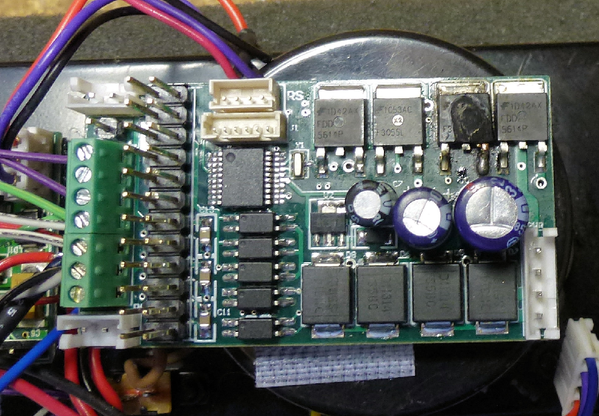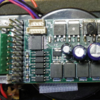Originally Posted by Terrence L:
Fascinating item, John. Where does it get installed? Does it go on the mini cruise commander board Or somewhere else? Is it a simple solder job?
In either of the motor leads.
Originally Posted by jd-train:
John,
I'm still trying to grasp how the PTC's work (I do understand that they work on resistance) and how one decides on which ones to use.
Lets take the 1.30A trip, .65A hold unit, for example.
Does this mean that the current reaching the board it is protecting would be limited to no more than 1.30 amps?
What does the hold amperage mean? Will current get to the electric device protected by the PTC below the hold, example here being 0.65 amps?
How do you size a PTC for different modeling applications? With my MRC Dual with the meters, can I just put the engine or car on the track, crank up the transformer to 18 volts and use the amp meter reading to guide my selection?
Thanks,
Jim
There is no simple "rule of thumb" on how to size such a component, and opinions will surely vary when you get down to it. I picked the 1.3A one on an educated guess. I believe this one may be too large to provide total protection, but I figure to get some mileage on it and also try lower values and see if they affect operation. The key thing to consider is what is the average running current for the locomotive in question. My experience is that if locomotive is drawing several amps, it's usually pulling a significant load.
Originally Posted by Norton:
Another option guys is just use a fast blow fuse. PTCs are very slow similar to a Post War transformer. Motor stalling can happen but its pretty rare. Its not like you would have to swap out the fuse that often and if you did you have other issues.
The PTCs are an elegant but not perfect solution.
Pete
While it might not happen often, having to open it up to replace a fuse would get really annoying. 
Originally Posted by KG-Trainlove:
fyi the Bourns are slightly cheaper at Newark: http://www.newark.com/bourns ($0.217 vs. $0.44 Digikey). Here's the link:
http://www.newark.com/bourns/r...ma-radial/dp/59K0235
It's a .65A unit, with the trip at 1.3A. Good luck.
What does shipping hit you with at Newark? One of the bonuses with Digikey is the really cheap shipping on small orders.









